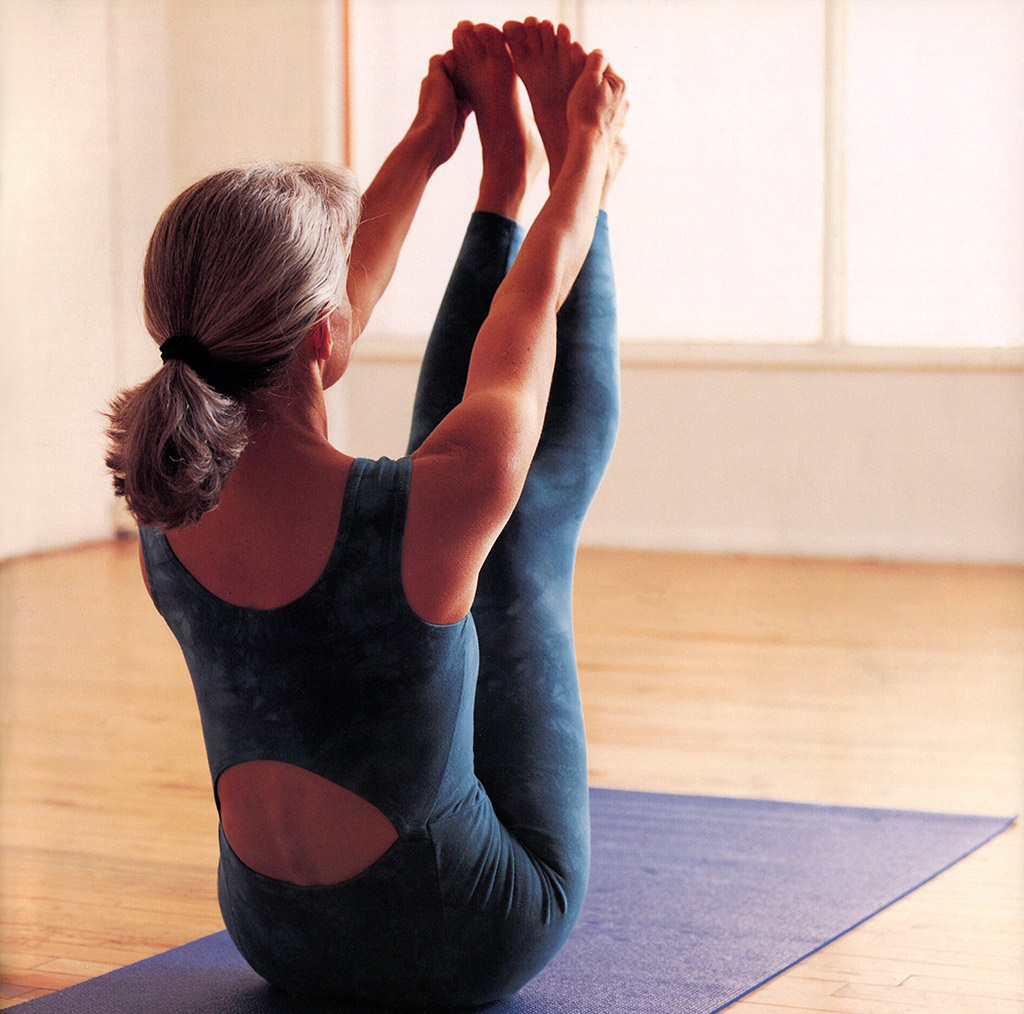
One of the physical benefits of practicing yoga asanas is the development of balance. This is something our four-legged friends don’t have to worry about. But as two-legged, upright-walking humans, balance is a skill that we need to keep cultivating throughout our lives.
According to the Center for Disease Control, falls are the leading cause of injury and death in older people. So even though you may not be elderly yet, with any luck, you will be someday. It’s important to start developing your balance now.
Yoga Practice for Developing Balance
When we think of balance poses in yoga, we usually think of Vrksasana (Tree Pose), Garudhasana (Eagle Pose), and Hasta Padangusthasana (Hand-to-Big Toe Pose)—all one-legged standing poses. Practicing these is, of course, essential for developing balance. But it’s also important to learn to balance while in different relationships to gravity.
Ubhaya Padangusthasana (ubhaya = both, padangustha = big toes) is an example of balancing in an unusual relationship to gravity—on our rear ends. The pose is named after the big toes, and the “circuit” created in the body by connecting the fingers and toes. In my classes, I usually teach this pose toward the end of a practice, when I want to ground my students’ energy to prepare them to return to the outside world.
This is especially important if we have practiced poses that stimulate the upper body (such as inversions), or poses that bring energy to the surface (such as backbends). Ubhaya Padangusthasana simultaneously engages the core (stomach/spleen), grounds energy, revitalizes the body/mind, and stabilizes and steadies balance.
Over the years, I’ve noticed that this pose seems to be easier for women than for men. My guess is that because women’s center of gravity is lower (in the pelvis) and men’s center of gravity is closer to the lumbar area, it’s easier for women to feel grounded in their pelvises. Nonetheless, most men in my classes can easily practice this pose without ending up in a backward somersault!
How to Practice Ubhaya Padangusthasana
- Start by sitting on the floor on a mat with your feet stretched straight out in front of you. Bend your knees out to the sides, drawing your feet in toward your groin. Now curl your index and second fingers around the insides of your big toes—right fingers to right toe, left fingers to left toe.
- With your knees still bent, rock back onto your bum so that your feet lift off the floor. Now rock slightly forward and back until you feel the back edges of your sit bones against the floor. Balance here and root your sit bones into the floor, simultaneously lengthening your spine.
- Allow your shoulder blades to slide down your back so that your neck feels long. Lift your heart toward the sky. Balance here with your knees bent for a few breaths until you feel rooted, stable and spacious.
- When you feel steady, straighten your knees, continuing to ground your base, and allow your torso and legs to grow up out of your base, like a tree reaching toward the sky from its roots. My students will recognize this instruction as “active yield.” Active yield, a concept I learned from Donna Farhi, is a way of taking advantage of the ever-present force of gravity—the Earth’s strongest energy—to create lightness. Rather than propping yourself up away from the ground by using muscular energy to lift you, let your weight first release into your rear and then actively press your rear down into the floor so that the rest of your body rebounds upward. Reach your feet toward the sky.
- If you can’t keep your knees straight without tipping backward or rounding your back, bend your knees and hold onto the backs of your thighs with your shins parallel to the floor. Continue to practice active yield.
- Another variation that may suit you is to hold the outsides of your feet instead of your big toes. Some people’s toes and fingers can become fatigued in this pose. Even though this pose is named after your toes, it’s okay to hold the outsides of your feet instead. Connecting your hands and feet in this way creates a closed circuit in the body similar to that of holding the toes.
- Stay in the pose for five to ten breaths. Then bend your knees, drawing your feet toward you. Place your feet back on the floor with your knees bent and then slide the legs out in front of you. Rest with your legs stretched out and your front thighs, knees and toes facing the ceiling. Relax and feel your hips and legs resting on the floor. You can support your spine by placing your hands on the floor next to your hips if you like.
You can practice Ubhaya Padangusthasana any time, but it is especially balancing at times when you are experiencing anxiety, agitation or that vague spacey state that results from too much computer work. It’s invigorating and calming simultaneously.
Updated article from September 9, 2011.
